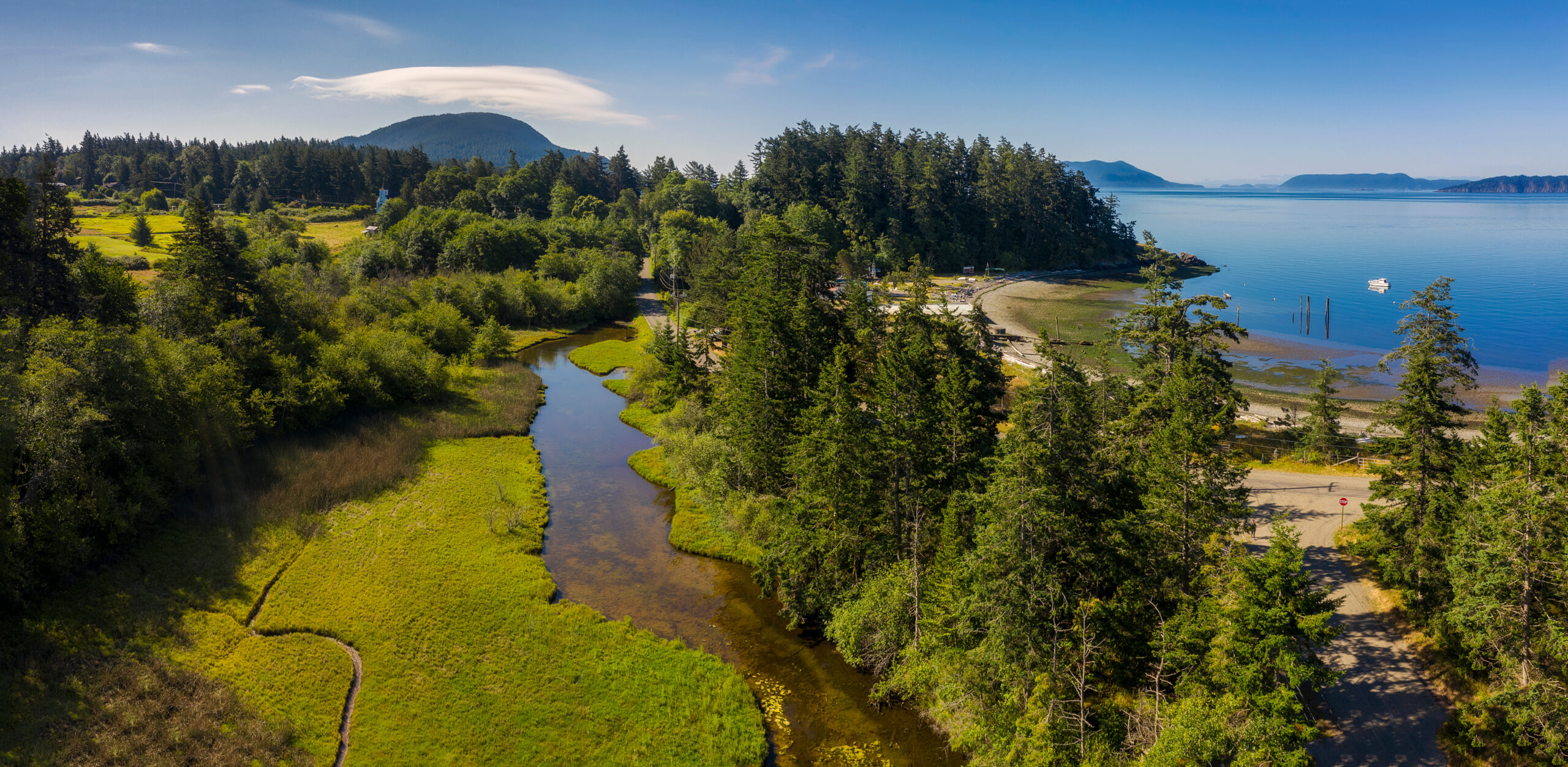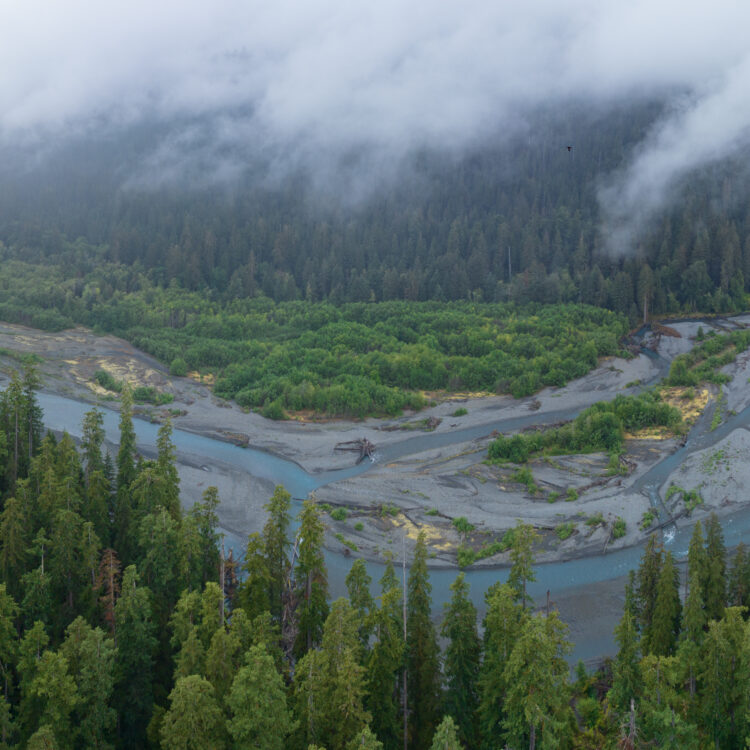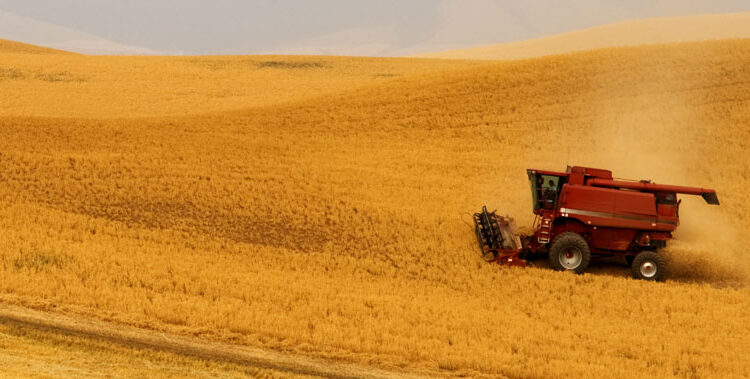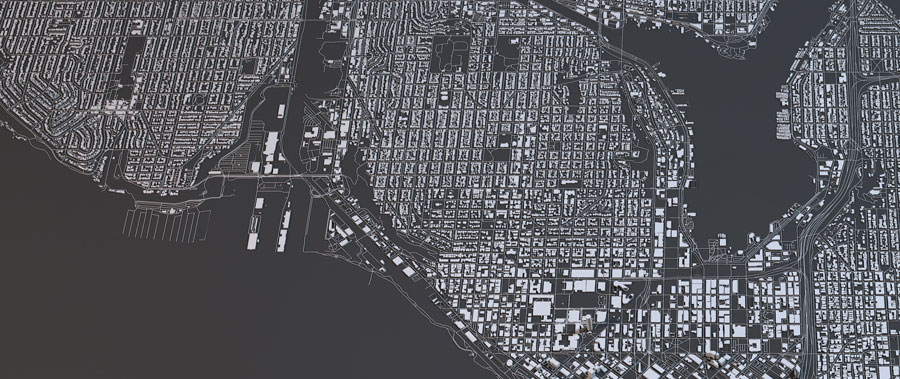The Ecosystem Services program is responsible for implementing natural environment protection and restoration policy in the Growth Management Act. This includes critical areas protection, and implementation of the Commerce role in the Governor’s salmon recovery strategy, and the Commerce role in the Puget Sound National Estuary Program.
Critical Areas Protection
Natural Resource Lands
Transfer of Development Rights (TDR)
Salmon Recovery through Local Planning grant
The Department of Commerce, in collaboration with the Puget Sound National Estuary Program and the Stormwater Strategic Initiative Lead (SWSIL), developed the Salmon Recovery through Local Planning grant program to support local governments and tribes working on salmon recovery and to further the Puget Sound National Estuary Program’s investment priorities.
The funding provided through this program supports updates to comprehensive plans and development regulations focused on protecting ecosystems, improving water quality and improving vital salmon habitat.
Funding details
Approximately $1 million in grant funding is available to cities and counties both fully and partially planning under the Growth Management Act and federally recognized tribes in the Puget Sound.
Application information
- Salmon Recovery through Local Planning Grant Application Instructions (PDF)
- Grant Application (Smartsheet intake form)
- Questions and Answers (PDF)
Applications due: 4 p.m. Monday, March 31, 2025
Pre-application workshop
Commerce hosted a pre-application workshop on February 11, 2025 to provide more information about this grant opportunity.
- View and download the pre-application workshop presentation (PDF)
- Watch a recording of the pre-application workshop (PDF)
Questions?
If you have any questions, please contact us at angela.sanfilippo@commerce.wa.gov.
Where did funding go?
The below map shows past awardees of the Salmon Recovery Through Local Planning grant program. This map provides more detail. A list of grant recipients is provided in the dropdown below.
| Grantee | Award amount | Work plan | Project completion date |
|---|---|---|---|
| Snoqualmie Tribe | $230,011 | Develop land management codes, regulations, and enforcement for long term planning goals to project salmon habitat and restore native landscapes. | June 30, 2027 |
| Thurston County | 250,000 | Research and development of new approaches to water resource management emphasizing water availability for the benefit of salmon recovery and water supply. | Jan. 15, 2026 |
| Everett | 250,000 | Advance low-impact development implementation and develop proposal for wetland mitigation bank in Everett. | June 30, 2026 |
| Lake Stevens | $247,339 | Basin-level watershed plan focused on salmon habitat and water quality. | June 30, 2027 |
| Ilwaco | $212,500 | Update comprehensive plan goals and development regulations to advance salmon recovery and promote regenerative stormwater management. | June 30, 2026 |
Resources
As part of the National Estuary Program and funded through the U.S. Environmental Protection Agency, the Washington State Departments of Commerce, Ecology, Fish and Wildlife, and Natural Resources have coordinated their efforts to promote watershed-based planning approaches to development and natural resource protection.
Funding has been directed to support numerous local, tribal and non-profit groups to improve environmental outcomes for the Puget Sound basin. Since 2016, these agencies have worked with the Washington Stormwater Center at Washington State University to promote integrated stormwater and land use planning approaches, and are collaborating with other federal, state, local and tribal partners to promote regional priorities and fund targeted near term actions to recover the Puget Sound basin.
Please see the list of Commerce supported goals and techniques:
- Promoting more regional alliances to improve cross-jurisdictional planning, with an emerging focus on regional approaches to targeted stormwater mitigation.
- Puget Sound Mapping using consistent methods to display growth patterns across the Puget Sound Region, which allows decision makers to compare expected and actual development patterns over the landscape across major land use categories.
- Stormwater projects including watershed-based retrofit planning, as well as developing new implementation strategies for improving freshwater stream health and reducing toxic pollution impacts on fish.
- Advancing Transfer of Development Rights (TDR) and Land Conservation and Local Infrastructure Programs (LCLIP) in the Puget Sound Region. With increasing climate impacts, TDR and LCLIP provide important tools for local governments to address climate resilience and adaptation by offering ways to move development from places a community would like to preserve to places the community would like to focus development, such as compact, walkable areas served by high-capacity transit.
- Sound Choices Checklist – 2023 (PDF) — This checklist aligns Puget Sound recovery strategies and actions with comprehensive plan elements. Puget Sound jurisdictions can use the checklist to consider if and how their comprehensive plans are setting the stage for Puget Sound recovery. This checklist also compliments the Washington State Department of Fish and Wildlife’s Riparian Management Zone Checklist (PDF).
- Guidance on Integrating Stormwater Solutions into Comprehensive Plans (PDF) — PSRC’s guidance discusses stormwater solutions across comprehensive plan elements and how to integrate policies into your local plan. The guidance provides model policies, project examples and resources that can provide the groundwork for implementing these solutions. The Puget Sound Regional Council’s Planning Resources page also has additional resources on stormwater and watershed planning.
- Planning for Stormwater Parks (PDF) — Stormwater parks are community facilities that treat stormwater from a larger area, while also providing recreational opportunities. This guidance document describes the many benefits of stormwater parks, shares information and lessons learned from already-built parks, and provides guidance for the planning of future stormwater parks.
- Low Impact Development, Technical Guidance Manual for Puget Sound (PDF) — This guidance manual provides storm water managers and site designers with a common understanding of low impact development (LID) practices and specifications applicable to the Puget Sound basin. Technical LID guidance will assist engineers, landscape architects, developers, and planners with project design and construction.
- The Puget Sound Urban Tree Canopy and Stormwater Management Handbook (PDF) — This handbook provides an overview of stormwater management benefits. The handbook promotes tree planting and tree retention as a green stormwater infrastructure strategy. The guidance also encourages communication between urban forestry and stormwater management professionals, in addition to educating and engaging policy makers, builders, developers, and property owners about environmental and community benefits.
- Building Cities in the Rain (PDF) — Commerce’s Building Cities in the Rain describes a three-step process for prioritizing watersheds for stormwater retrofits. It is intended to provide a tool for local governments to target investment in stormwater retrofits in a way that leverages opportunities for salmonid habitat restoration and facilitates redevelopment in urban centers. More information can be found on the Building Cities in the Rain EZ view site.
- Incentivizing low-impact development (PDF) — Commerce’s Incentivizing Low Impact Development (LID) guidebook and factsheet presents ways that local governments can incentivize developers to voluntarily incorporate LID on projects in urban growth centers. The guidebook includes tools and outreach materials that local governments can utilize to encourage developers to go beyond existing stormwater requirements, including factsheets for best management practices and a variety of incentive programs. More information can be found on the Building Green Cities EZ view site .
- Community Based Public-Private Partnership — A Community Based Public-Private Partnership (CBP3) is an innovative option in which a government agencies and private partners use green infrastructure to improve both water quality and quality of life for a community. It can be used within Phase I or II municipal storm water permits, or to assist with smaller scale public and private stormwater improvement projects. Please see Ecology’s Puget Sound webpage and Puget Sound Characterization Project for more information.
A Community Based Public-Private Partnership (CBP3) is an innovative option in which a government agencies and private partners use green infrastructure to improve both water quality and quality of life for a community. The following guidebook is oriented to local government staff considering a CBP3 project option for their municipality.
It can be used within Phase I or II municipal storm water permits, or to assist with smaller scale public and private stormwater improvement projects. The guidebook provides guidance in project finance, procurement, construction, and maintenance to local staff, project participants, and elected officials.
Please see these Ecology websites for more information:



